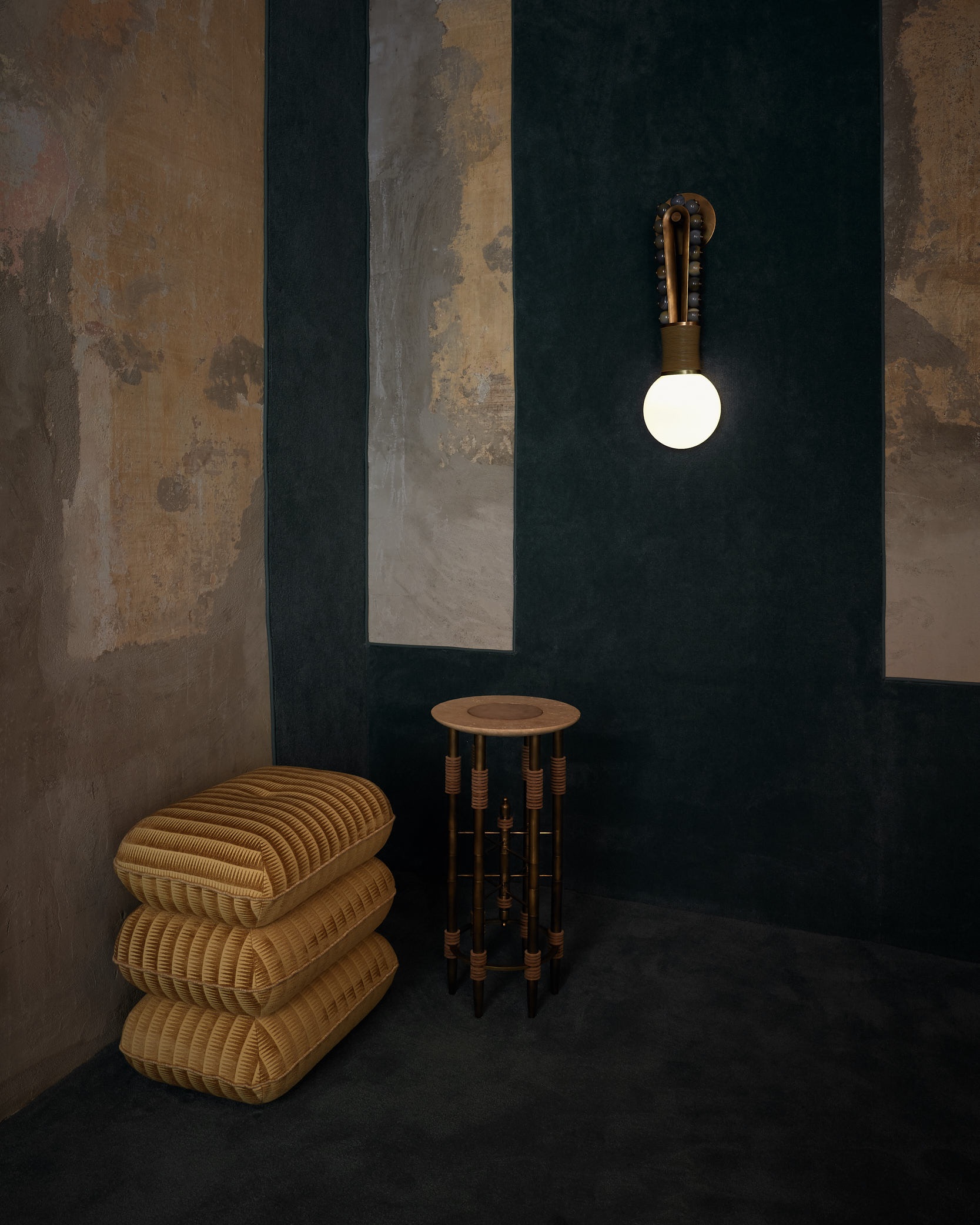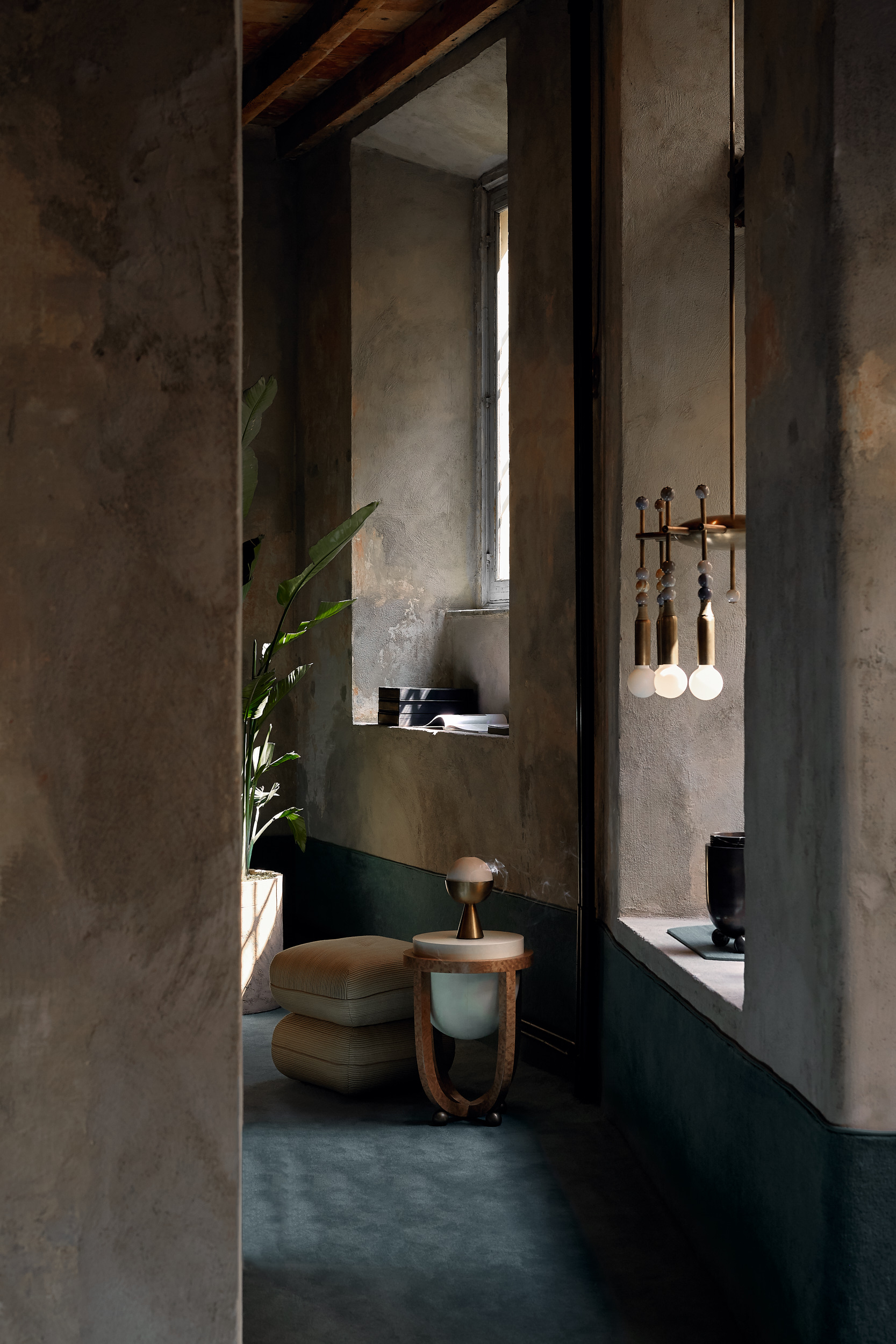Inside the Creative Realm of Studio Apparatus
Since its’ inception in 2012, New-York-based design studio, Apparatus has explored their design ethos through the relationships held between lighting, furniture and objects in immersive environments. Fittingly, their conversation started out as a home renovation project that quickly garnered the attention of friends who were fascinated by their striking and unique designs. Inspired by the principle of a total work of art, the studio has since transformed itself from its early days as an unexpected start-up to one of the country’s most talked-about and renowned design firms.
"Ultimately, people remember what things look like but they remember more how things make them feel"
The creative minds behind Apparatus draw from their historical roots and the traditions of studio craftsmanship, to achieve their distinguished aesthetic. Sculptural pieces of hand-made lighting fixtures and objects are meticulously etched together; retaining this playful imperfection which is at once nostalgic as it is innovative. What Jeremy Anderson and Gabriel Hendifar, the creative duo behind Apparatus, lacked in experience – Anderson working in Public Relations and Hendifar in Fashion Design – was made for up by their creative vision and eye for unique combinations of reclaimed materials and texture. Followed by the debut of Apparatus’ Act III at The Salone del Mobile, Anniversary sat down with Co-founder and Creative Director, Gabriel Hendifar to discuss their most recent collection, and the genesis behind its personal narrative.
As Apparatus continues to expand its empire, their approach still remains the same – using designs as a tool to evoke an emotional response. “As the studio has evolved, it has become a tool to tell stories and create experiences. Ultimately, people remember what things look like but they remember more how things make them feel…I think anything you interact with has the opportunity to leave some sort of mark that is deeper than just the visual currency,”
states Hendifar.
In Apparatus’ collection, Act III, the creative duo has finally been able to explore their designs through a more personal lens.“I think we’re at a point in Act III where we are really investing in this idea of narrative. It is very exciting, for me specifically, because it feels that all of these things that I studied and past lives that I have lived are coming together in a way that is really exciting and strong,” recalls Hendifar. Act III focuses on the exploration of Hendifar’s cultural history and personal narrative through his life as a First-generation Persian-American.
“My ideas of good taste as an adult was formed in opposition to the things that I grew up with, which for me was from a distant place that I didn’t have access to"
The origin of the collection is drawn upon from a box inherited from his grandmother, a gift brought from Iran to the United States in 1979 as a political refugee. References to the Middle East remain a key point of departure for the collection, as it is a tool for Hendifar to create a palpable connection between the duality of his roots and his reality. “My ideas of good taste as an adult was formed in opposition to the things that I grew up with, which for me was from a distant place that I didn’t have access to … so it never felt like mine, and in my desire to want to assimilate and feel like I had my own identity, I really absorbed great Western ideas about what beauty, proportion and ornamentation are and found myself in this modernist way of thinking,” recalls Hendifar. “The point for me is to find a place where those two identities meet ... this collection is definitely trying to bridge that gap,” admits Hendifar. As the design duo step into the realm of personal narratives, it is pleasing to see their creative vision collide with self-discovery.
Apparatus’ collection of patinated brass fixtures, playfully imperfect furnishings and sensual textiles holds a narrative, drawing on the vocabulary of desire and emotional response. The studios ever-evolving articulation of considered spaces and furnishing is used to convey their innovative designs, an assortment of furniture, lighting and objects rooted in the innate complexity of self-discovery.
Gabriel Hendifar
of Apparatus
All images by Alex Lesage — threefold.



















